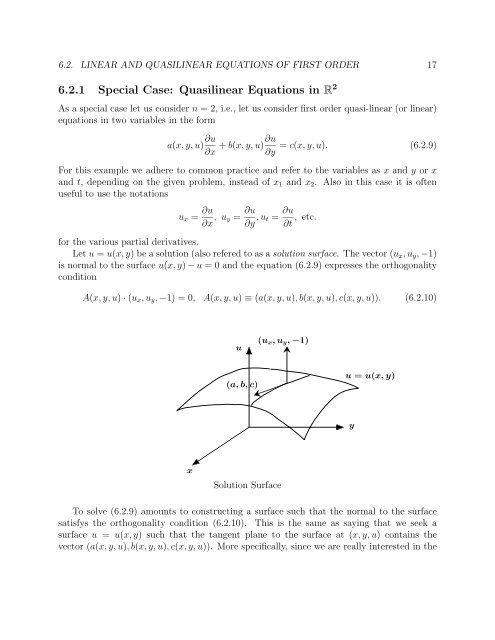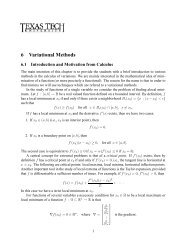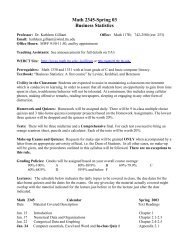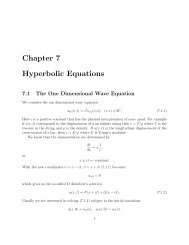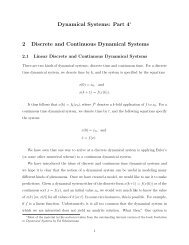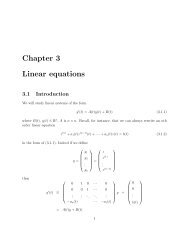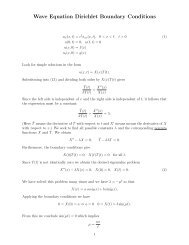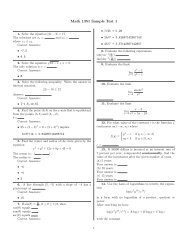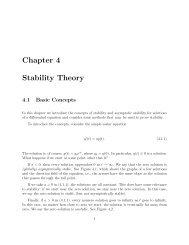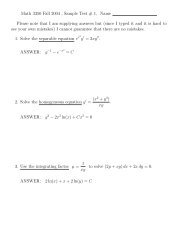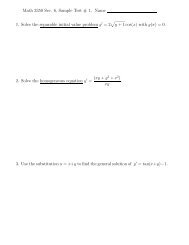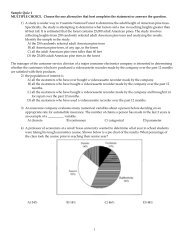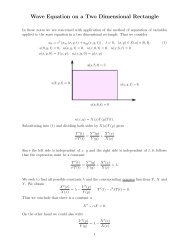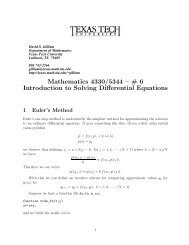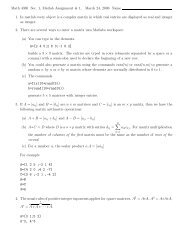Chapter 6 Partial Differential Equations
Chapter 6 Partial Differential Equations
Chapter 6 Partial Differential Equations
Create successful ePaper yourself
Turn your PDF publications into a flip-book with our unique Google optimized e-Paper software.
6.2. LINEAR AND QUASILINEAR EQUATIONS OF FIRST ORDER 17<br />
6.2.1 Special Case: Quasilinear <strong>Equations</strong> in R 2<br />
As a special case let us consider n = 2, i.e., let us consider first order quasi-linear (or linear)<br />
equations in two variables in the form<br />
a(x, y, u) ∂u + b(x, y, u)∂u<br />
∂x ∂y<br />
= c(x, y, u). (6.2.9)<br />
For this example we adhere to common practice and refer to the variables as x and y or x<br />
and t, depending on the given problem, instead of x 1 and x 2 . Also in this case it is often<br />
useful to use the notations<br />
u x = ∂u<br />
∂x ,u y = ∂u<br />
∂y ,u t = ∂u<br />
∂t , etc.<br />
for the various partial derivatives.<br />
Let u = u(x, y) be a solution (also refered to as a solution surface. The vector (u x ,u y , −1)<br />
is normal to the surface u(x, y) − u = 0 and the equation (6.2.9) expresses the orthogonality<br />
condition<br />
A(x, y, u) · (u x ,u y , −1)=0, A(x, y, u) ≡ (a(x, y, u),b(x, y, u),c(x, y, u)). (6.2.10)<br />
u<br />
(u x ,u y , −1)<br />
(a, b, c)<br />
u = u(x, y)<br />
y<br />
x<br />
Solution Surface<br />
To solve (6.2.9) amounts to constructing a surface such that the normal to the surface<br />
satisfys the orthogonality condition (6.2.10). This is the same as saying that we seek a<br />
surface u = u(x, y) such that the tangent plane to the surface at (x, y, u) contains the<br />
vector (a(x, y, u),b(x, y, u),c(x, y, u)). More specifically, since we are really interested in the


